Two diverging lenses are kept as shown in figure. The final image formed will be
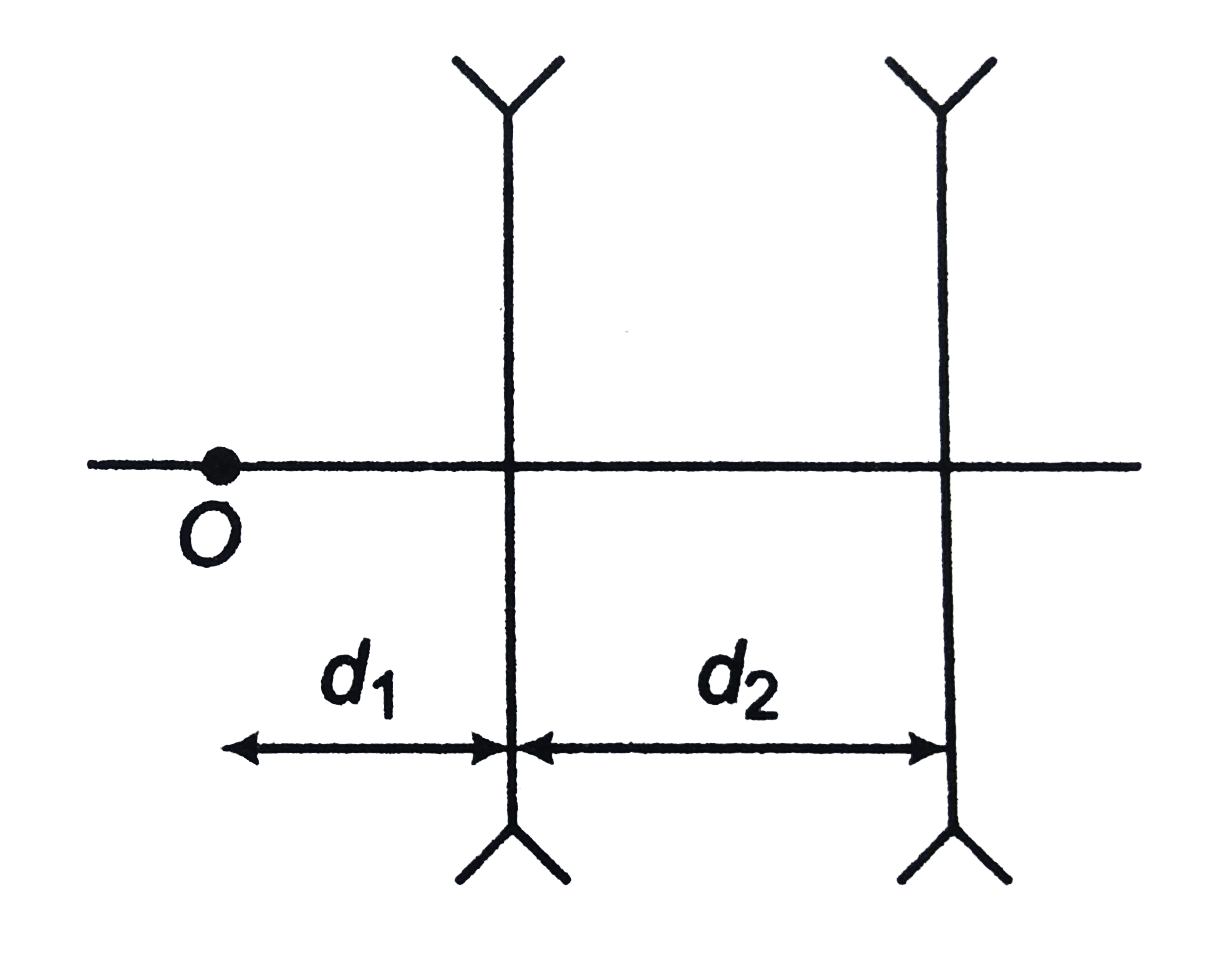
virtual for any value of d1 and d2
real for any value of d1 and d2
virtual or real depends on d1 and d2 only
virtual or real depends on d1 and d2 also on the focal lengths of the lens
The correct Answer is:A
for real object concave lens made the virtual image
Topper's Solved these Questions
Similar Questions
An object P is kept in front of two plane mirrors as shown in the figure. The number of image formed is k. Find out the value of k.
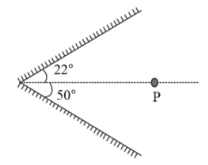
View SolutionA converging mirror M1 a point source S and a diverging mirror M2 are arranged as shown in figure. The source is placed at a distance of 30 cm from M1. The focal length of each of the mirrors is 20 cm. Consider only the images formed by a maximum of two reflections. It is found that one image is formed on the source itself. (a) Find the distance between the two mirrors. (b) Find the location of the image formed by the single reflection from M_2

View Solution
Knowledge Check
A point ofject 'O' lies in front of the lens as shown in figure. Find the final position of image formed by the combined lenses.
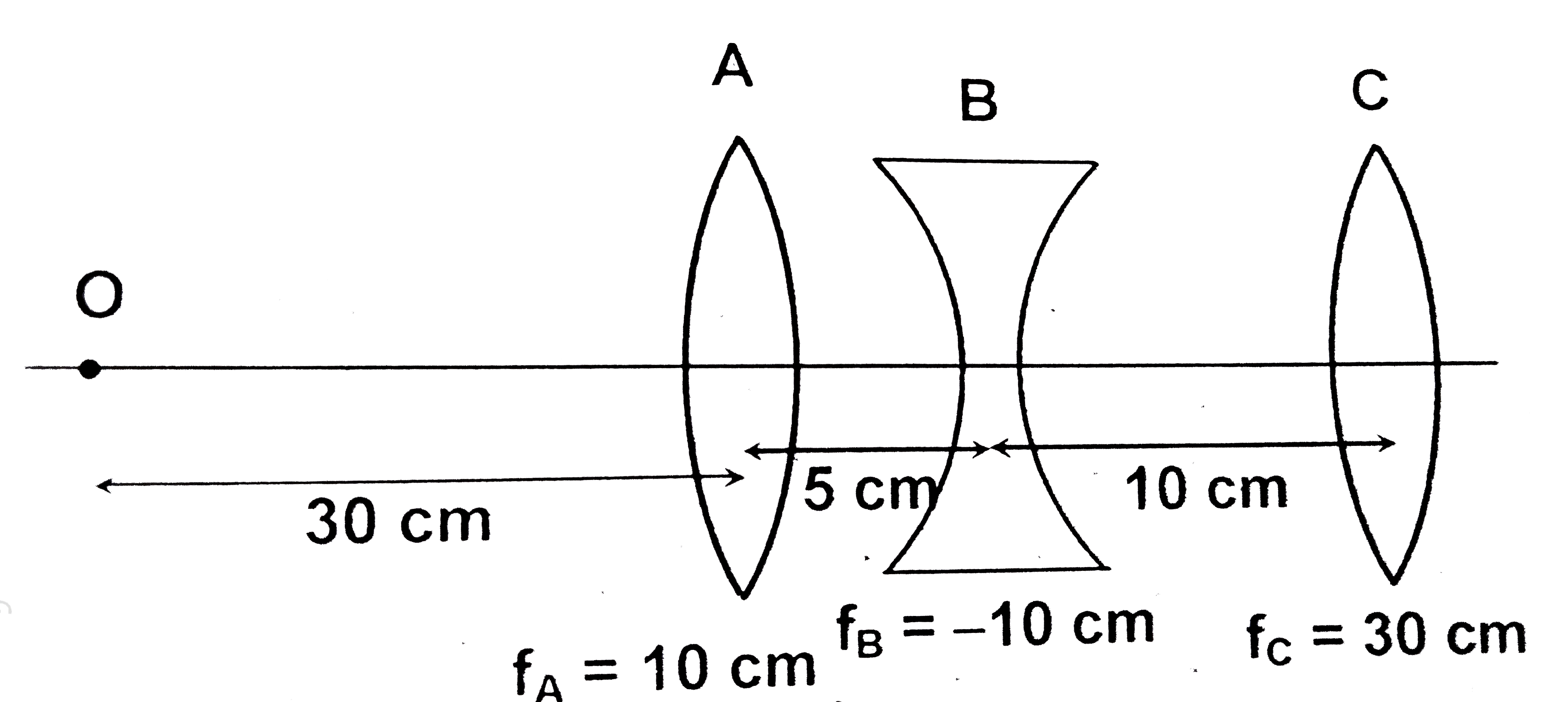 A10cm to the right of the lens CB15cm to the right of the lens CC20cm to the right of the lens CD30cm to the right of the lens C
A10cm to the right of the lens CB15cm to the right of the lens CC20cm to the right of the lens CD30cm to the right of the lens CFor the system as shown in the figure, the image formed by the concave mirror
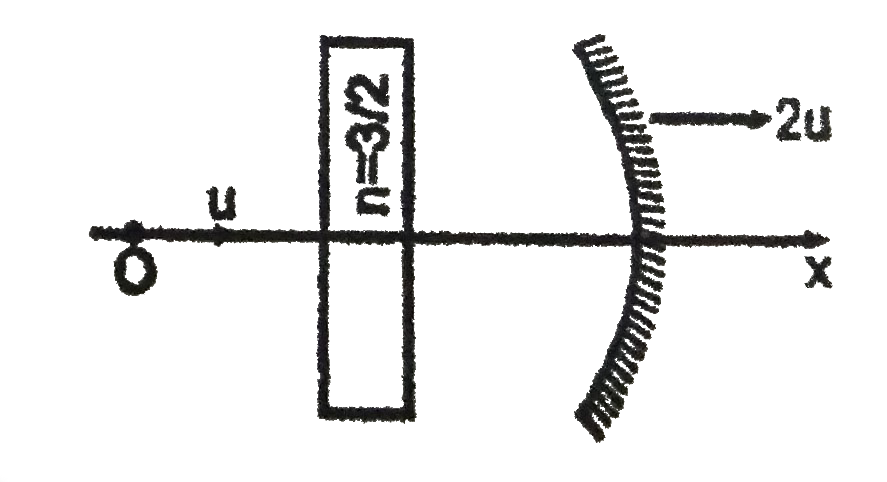 Awill have speed greater than the speed of the objectBmay have speed greater than the speed the objectCwill have speed less than the speed of the mirrorDmoves away from the mirror
Awill have speed greater than the speed of the objectBmay have speed greater than the speed the objectCwill have speed less than the speed of the mirrorDmoves away from the mirror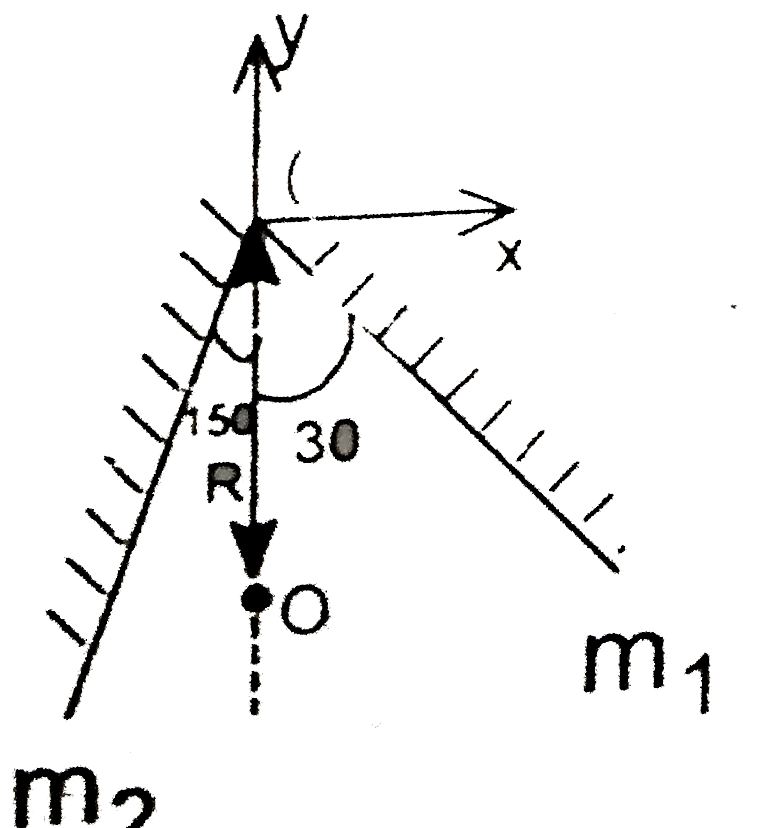
Two plane mirrors intersect at origin. An object 'O' is kept at a distance R on negative y-axis as shown in the figure. The co-ordinates of images formed after three reflections will be (first reflection is is considered at m1)A(−R/2,+√3R/2)(−R,0)&(+√3R/2,+R/2)B(−√3R/2,+R/2)(+R,0)&(+R√2,+R√2)C(√3R/2)(−R,0)&(+R/2,+√3R/2)D(−R√2,R√2)(+R,0)&(+R2,+√3R2)
Two convex lenses of focal length 20cm each are placed coaxially with a separation of 60cm between them. Find the image of a distant object formed by the combination by:
a. Using thin lense formul separately for the two lenses, and
b. Using the equivalent lens. Note that although the combination forms a real image of a distant object on the other side, it is equivalent to a diverging lens as far as the location of the final image is concerned.
View SolutionTwo convex lenses f focal length 20 cm each are placed coaxially with a separation of 60 cm between them. find the image of a distance object formed by the combination by a. using thin les formula separately for the two lenses and b. using the equivalent lens. Note that although the combination forms a real image of as distance object on the other side, it is equivalent to as diverging lens as far as the locatiion of the final image is concerned.
View SolutionFor the combination of one prism and 2 lenses shown in figure, the size of the final image (in mm) = 0.5n. When the object (of length 1 cm) is located as shown in the figure. Refractive index of material from which prism is made is p = 1.5. Find the value of n
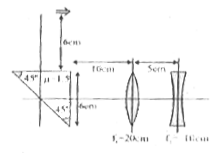
View SolutionIn a travelling microscope, the final image is formed at
View SolutionIn Gallilean telescope, the final image formed is
View Solution